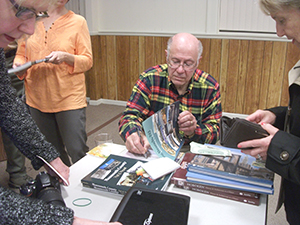
Historian talks about change, both good and bad
October 24, 2014
Gregory School experiment destroyed in rocket explosion
October 30, 2014By Neil Schulman
Long Branch — Council has introduced a bond ordinance for $30,400,000 to finance numerous projects to repair damage caused by Superstorm Sandy.
The bond ordinance was introduced at the Oct. 14 City Council meeting.
FEMA is expected to reimburse the city for its expenses in these projects, since they were caused by the 2012 natural disaster.
Some of the projects in the bond include
• $250,000 to repair the Lake Takanassee spillway.
• $18 million for major boardwalk repairs, covering everything from rebuilding the bluffs to getting new trash containers.
• $37,000 to demolish the Bay Avenue building formerly used by the Recreation Department, which flooded and became unusable afterward. Officials say they are considering whether to rebuild a new structure there in the future.
• $11.5 million for improvements and repairs to parks around the city, from field repair and turf replacement to new underground electric wiring to boardwalk widening.
Because bonding involves borrowing money, City Director of Finance Ron Mehlhorn said that at first glance it appears the city has a very large debt.
“This increases our debt to $108 million,” he said.
However, half of that is not owed by city taxpayers, but by outside agencies. Often the groups require the city to pay for the initial expenditures and then reimburse Long Branch once work is completed.
For example, FEMA will be paying the $30 million for this bond ordinance when the work has been completed. Another $1.1 million for repairs to Lake Takanassee will be paid by the state’s Green Acres program.
In another case, $1.5 million for work done on downtown Broadway must be paid back by whoever ultimately is chosen as a developer for the region.
Mehlhorn said that while FEMA reliably repays the money for these projects, the manner they repay seems to vary with each town and project. Sometimes it’s in one lump sum, sometimes it’s over time.
Atty: wording deceptive
While an ordinance with wording provided by the state on acquiring land rights for beach replenishment uses the phrase “eminent domain,” City Attorney James Aaron says that all the property owners in question have already agreed to the proposals without the need for the state to seize the land.
Council introduced an ordinance “authorizing the acquisition of certain real properties by negotiation or eminent domain.”
Aaron said that all the properties in question have already, voluntarily, made the authorization, which involves shoreline property easements the state says are necessary for it to legally perform beach replenishment.
The properties in question will be used for replenishment work from Takanassee Lake to Deal, expected to start next year.
However, the New Jersey Department of Environmental Protection determined there were, in the words of the ordinance, “inadvertent ministerial defects” in the deeds signed, which keep them from properly recording them.
The state attorney general believes about a dozen of the deeds in Long Branch were not witnessed in the proper manner when they were signed, and that these need to be redone.
The wording for the ordinance to fix this issue was provided by the state, Aaron said, which is covering all costs to correct the matter.
“The state will pick up all the costs to deal with property owners and get the property owners to sign amended easements,” he said.
Because all property owners have agreed to this already, and this is essentially to correct a bureaucratic issue, Aaron says there would be no reason to expect property would be seized without owners’ consent.
“It’s ministerial in nature; it’s not going to wind up in an eminent domain proceeding,” he said.
The beach replenishment is another project caused in part by Superstorm Sandy, a measure to protect the coastline from future natural disaster. This will be the first time the northern half of Long Branch has received new sand.




